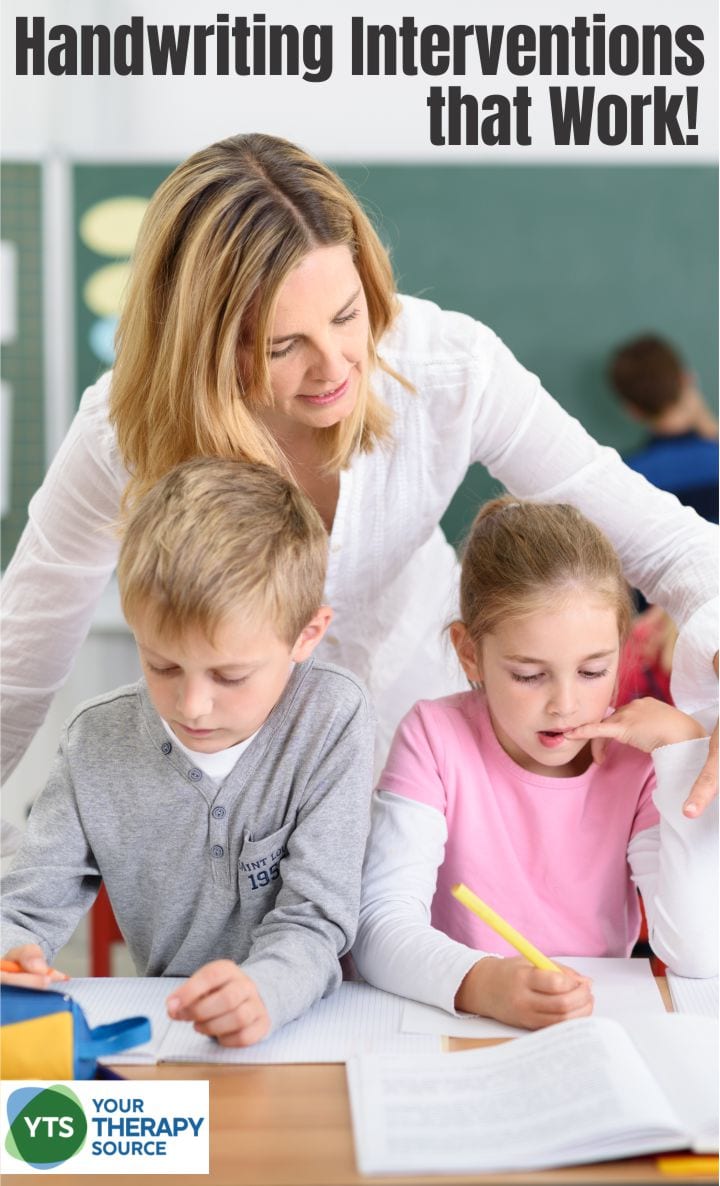Interventions for Handwriting that Work for Students

Do you see students struggling with handwriting skills on a daily basis? Maybe it is the increased use of technology at a younger age. Perhaps it is the lack of fine motor skill free play during childhood development. Or it even could be from a lack of muscle strength to produce legible writing. Regardless of what the cause may be, Occupational Therapists, teachers, and parents need interventions for handwriting that work for students.
What does the research say?
The Journal of Occupational Therapy, Schools, and Early Intervention recently published a systemic review on handwriting acquisition and interventions for handwriting for preschoolers through second grade. The results indicated the following:
- writing letters in late preschool contributes to letter recognition.
- Elementary students do better when handwriting is explicitly taught.
- Legibility improves with adequate practice.
- Interventions based on motor learning theory and cognitive learning strategies are effective in improving legibility.
- remediation of performance deficits was not shown to be effective.
Reference: Fancher, L. A., Priestley-Hopkins, D. A., & Jeffries, L. M. (2018). Handwriting Acquisition and Intervention: A Systematic Review. Journal of Occupational Therapy, Schools, & Early Intervention, 11(4), 454-473.
How do you assess if a student needs interventions for handwriting?
How do you assess if a child is making progress in foundational skill areas to support handwriting performance? How do you determine if further intervention is required? Ingrid S. King MScOT, BOT developed the Fantastic Fingers ® Handwriting Foundations Screen to identify handwriting needs fast and monitor progress. The screen provides standardized observations of functional skills in context.

The Fantastic Fingers ® Handwriting Foundations Screen:
- Is based on research and best OT practice to establish what foundations are important for early handwriting performance.
- Focuses on motor foundations as so many children today are vulnerable or at risk in their motor development.
- Includes 5 tasks (used with children between the ages of 3.5 and 7 years old) that are relevant and meaningful for young children to do, especially in preschool and school settings.
- Takes less than 15 minutes to administer.
- Also captures important qualitative observations while the tasks are being performed.
- Uses a rubric for scoring that is sensitive and reliable enough to measure changes over time when the same person administers the screen.
- Includes an easy report template with intervention guidelines and a cover letter in Word format for quick electronic sharing.
Read more about INterventions for handwriting research
CURRICULUM-BASED HANDWRITING PROGRAMS – WHAT DOES THE RESEARCH SAY?
EVIDENCE BASED RESEARCH ON WHY STUDENTS NEED TRADITIONAL HANDWRITING PRACTICE
IMPORTANCE OF HANDWRITING FOR WRITING
OCCUPATIONAL THERAPY HANDWRITING STUDY
Resources to Help with Handwriting Interventions
If you are in search of interventions for handwriting skills for young students, check out the following resources:
-
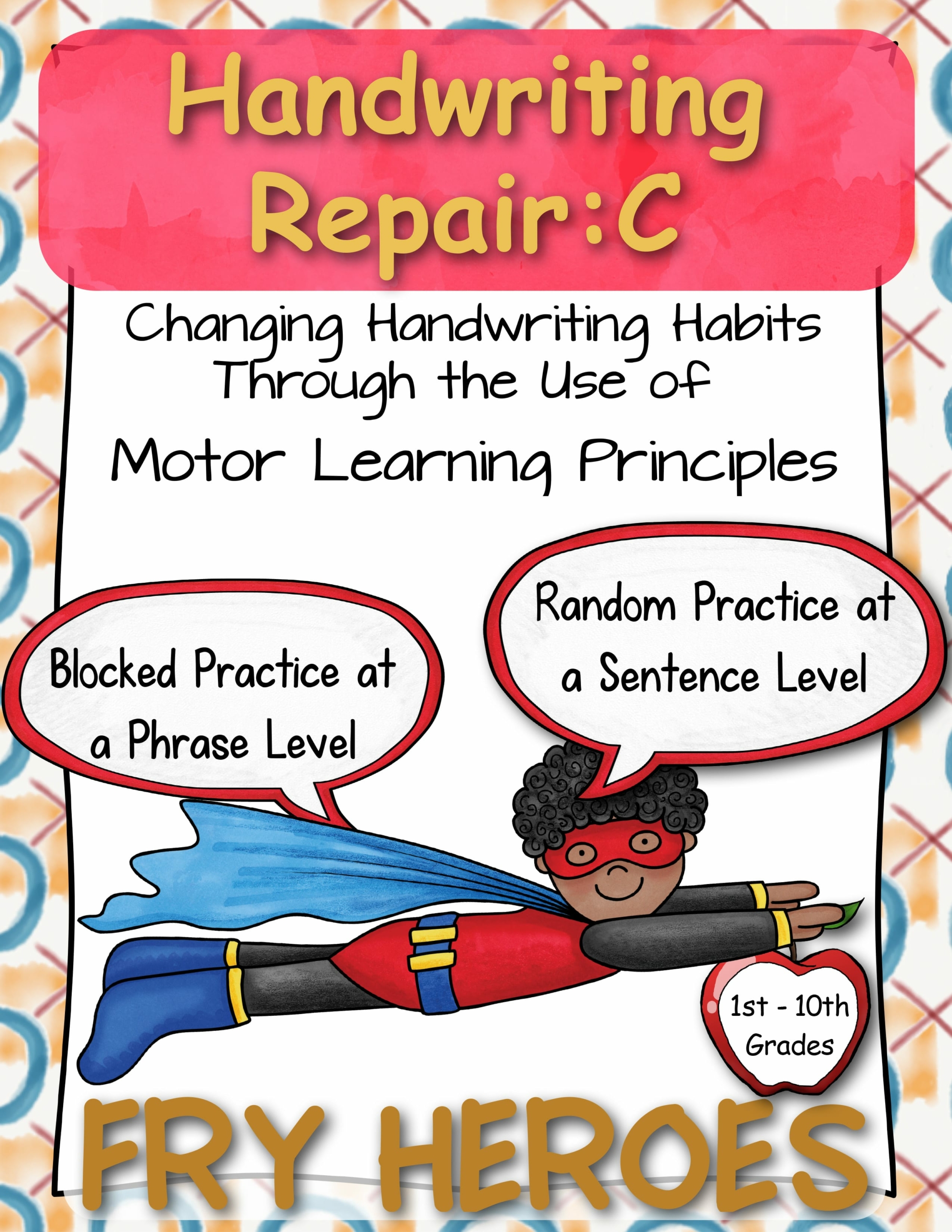 Handwriting Interventions: Blocked & Random Therapy Tools for Dysgraphia
Handwriting Interventions: Blocked & Random Therapy Tools for Dysgraphia -
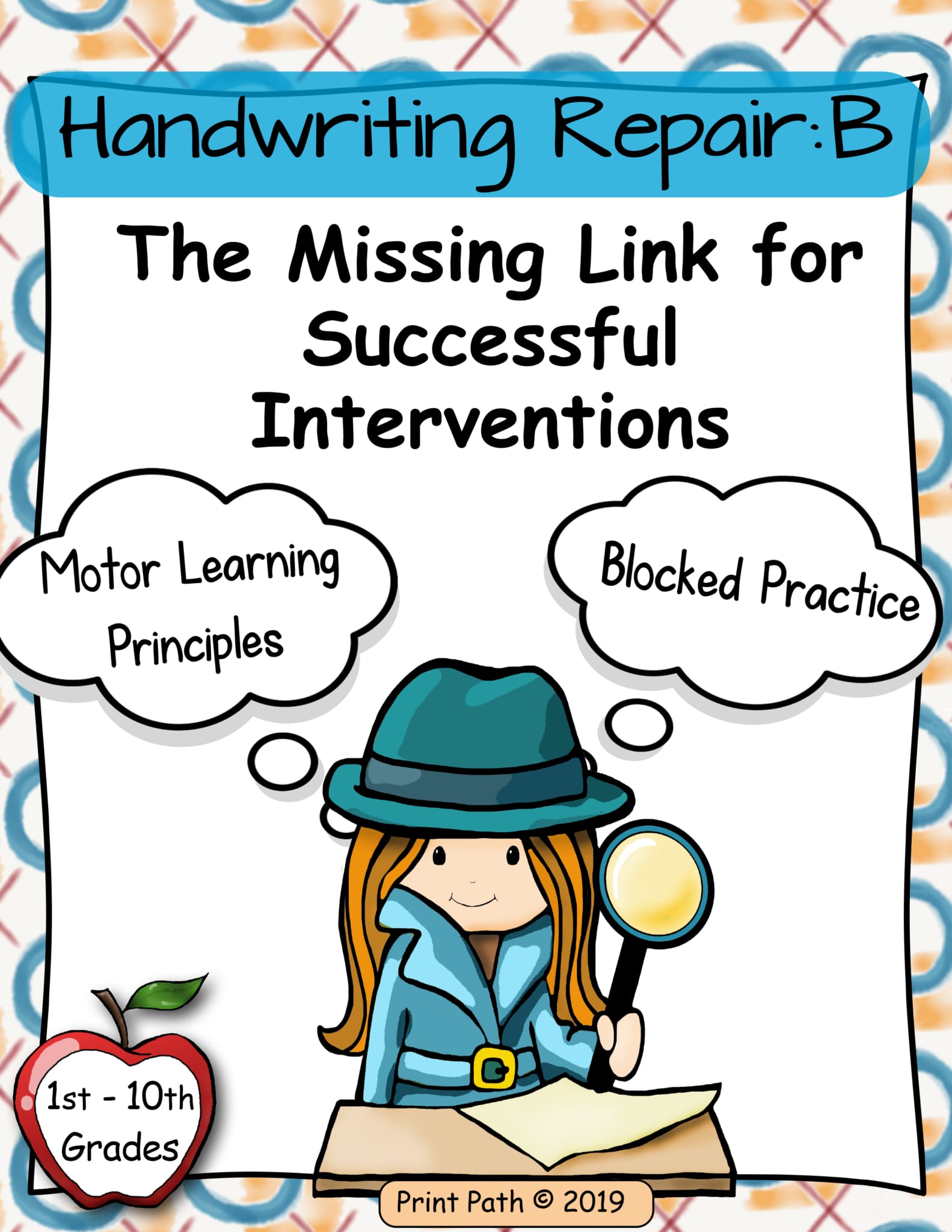 Handwriting Interventions – Occupational Therapy Tools for Blocked Handwriting Modification
Handwriting Interventions – Occupational Therapy Tools for Blocked Handwriting Modification -
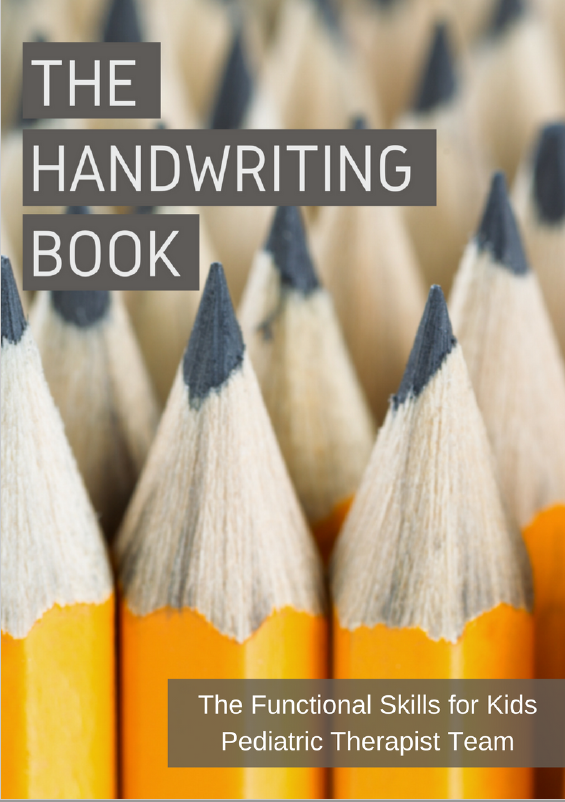 The Handwriting Book – FSFK Team
The Handwriting Book – FSFK Team -
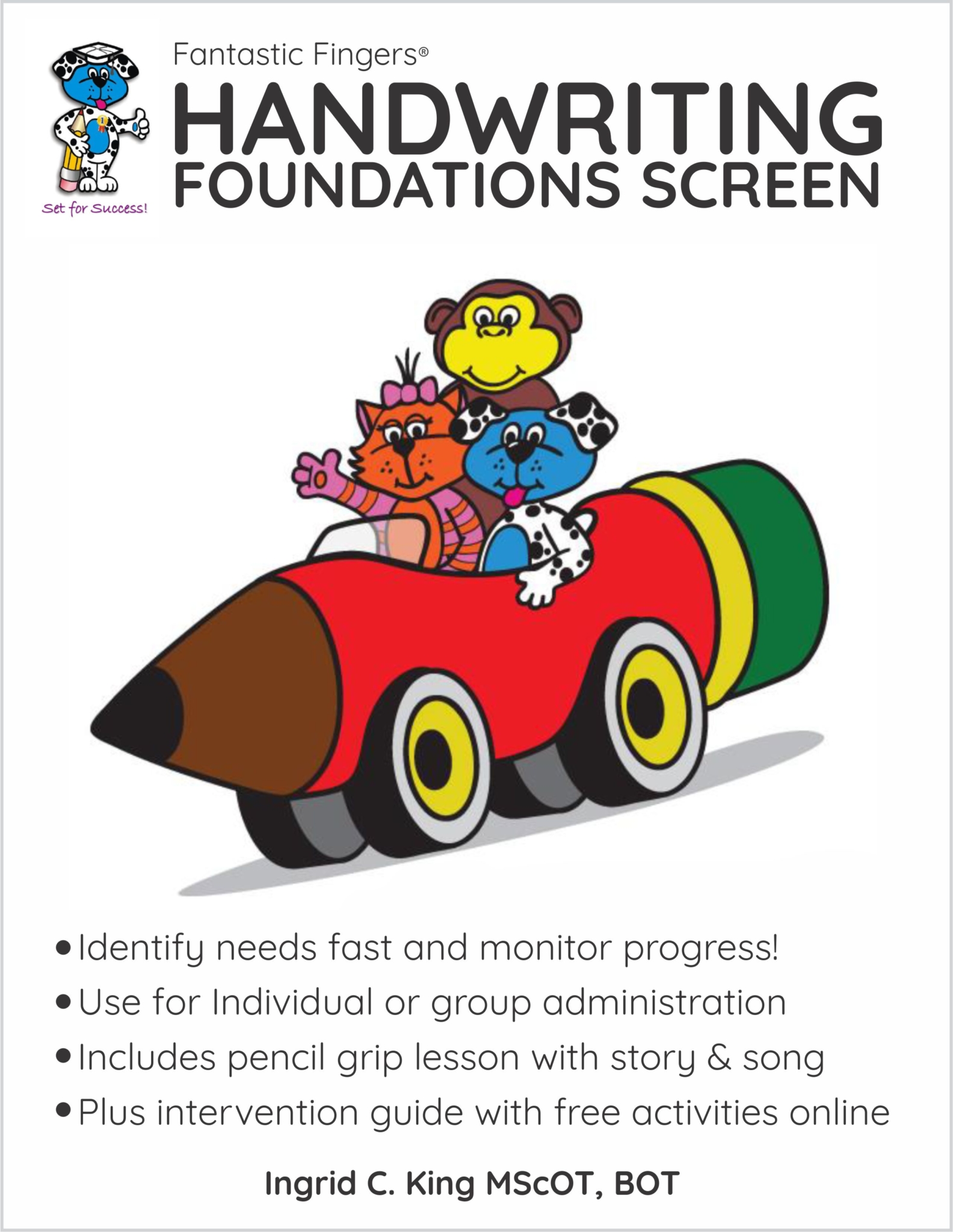 Handwriting Foundations Screen – Fantastic Fingers®
Handwriting Foundations Screen – Fantastic Fingers® -
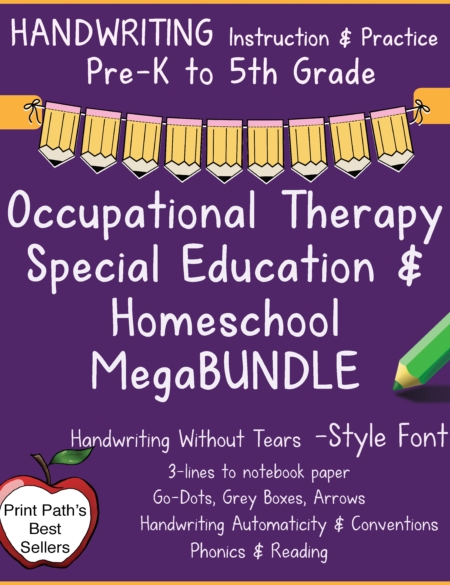 Handwriting Bundle – HWT Style Font
Handwriting Bundle – HWT Style Font -
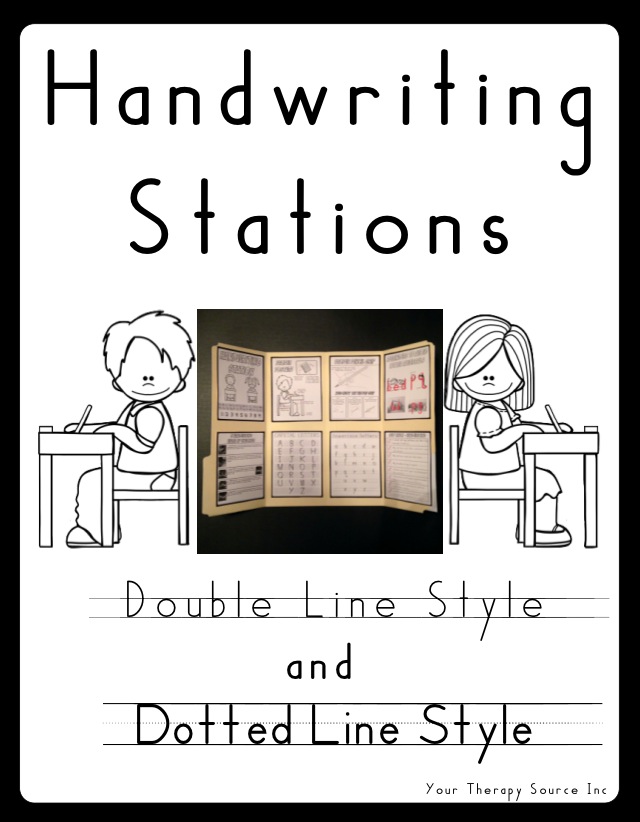 Handwriting Stations
Handwriting Stations
